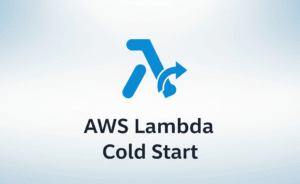Choosing the correct, or let’s say the best database is one of the most crucial decisions you’ll make when creating an app. Choosing between SQL (relational) and NoSQL (non-relational) databases can significantly impact how well your program performs, how easily it can be scaled, and how easily it can be created. Let’s go over everything you need to know to make a smart choice.
Getting to Know SQL Databases
For decades, SQL databases, which are also called relational databases, have been the main way to store data. They put data into tables with rows and columns and connect different bits of information using foreign keys.
Some well-known SQL databases are:
- PostgreSQL
- MySQL
- Microsoft SQL Server
- Oracle Database
- SQLite
Important Features of SQL Databases
Model of Structured Data: SQL databases have a set schema that tells them exactly how to store data. Everything has its own place and structure, just like a blueprint for a house.
Properties of ACID: Atomicity, Consistency, Isolation, and Durability are all things that SQL databases promise. This implies that your transactions are safe and your data is safe, even if something goes wrong while they are being processed.
Difficult Questions: You can get exactly the data you need with SQL’s strong query language, which lets you do complex things like joins, aggregations, and subqueries.
Example Schema:
-- Users table
CREATE TABLE users (
id INT PRIMARY KEY,
username VARCHAR(50),
email VARCHAR(100),
created_at TIMESTAMP
);
-- Orders table with a link to another table
CREATE TABLE orders (
id INT PRIMARY KEY,
user_id INT,
total_amount DECIMAL(10,2),
order_date TIMESTAMP,
FOREIGN KEY (user_id) REFERENCES users(id)
);
Learning about NoSQL Databases
NoSQL databases were created to get around the problems that traditional SQL databases had, especially when it came to dealing with a lot of unstructured data and the necessity for horizontal scaling.
There are other kinds of NoSQL databases, such as document stores (like MongoDB and CouchDB) and key-value stores. – Column-family (Cassandra, HBase) – Graph databases (Neo4j, Amazon Neptune)
Important Features of NoSQL Databases
Schema that can change: You don’t need to set up a structure for NoSQL databases ahead of time. You don’t have to worry about fitting all of your data into strict tables if you use a collection.
Scalability Across the Board: These databases can be spread out over many servers, which makes them great for handling a lot of data and traffic.
Good Performance: NoSQL databases can read and write very quickly, but they have to give up certain consistency guarantees to do so.
Example Document Structure (MongoDB):
{
"_id": "507f1f77bcf86cd799439011",
"username": "johndoe",
"email": "john@example.com",
"profile": {
"firstName": "John",
"lastName": "Doe",
"preferences": [
"music",
"travel",
"technology"
]
},
"orders": [
{
"orderId": "12345",
"amount": 99.99,
"items": [
"laptop",
"mouse"
]
}
]
}
When to Use SQL Databases
SQL databases are great when it’s important for data to be consistent and for relationships to be complicated.
Select SQL when:
Relationships that are hard to understand are important: SQL’s relational architecture is great for applications that need to work with complicated relationships between distinct data entities. SQL’s ability to keep referential integrity is useful for an e-commerce platform that has users, goods, orders, reviews, and inventories all linked together.
ACID Compliance is Important: SQL databases should be used for financial applications, banking systems, or any other application where data consistency is a must. You can’t afford to lose a transaction or have account balances that don’t match up.
Ecosystem that is mature: There are decades of tools, documentation, and knowledge available for SQL databases. It’s usually easier to locate engineers who know SQL than it is to find NoSQL experts.
Analytics and Reporting: SQL’s query capabilities are the best when you need to run complicated analytical queries, make reports, or do business intelligence work.
Examples of How to Use:
- Banks and other financial systems
- Enterprise resource planning (ERP) – Customer relationship management (CRM) – Traditional web apps with clear data structures
When to Use NoSQL Databases
When you need to deal with size, flexibility, and new application designs, NoSQL databases are the best option.
Pick NoSQL when:
Fast Development and Iteration: NoSQL’s schema flexibility is helpful for startups and agile development teams. You can change the structure of your data without having to do complicated migrations, which speeds up the process of making changes.
Requirements for Huge Scale: If you’re making the next social media site or dealing with data from millions of IoT devices, NoSQL’s ability to scale horizontally is a must.
Unstructured or Semi-Structured Data: NoSQL’s flexible approach works well with content management systems, user-generated material, or apps that operate with different types of data.
Real-Time Applications: NoSQL’s high-performance features are useful for gaming leaderboards, chat apps, and real-time analytics.
Some Examples of How to Use It:
- Sites for social media
- Systems for managing content
- Collecting data from the Internet of Things (IoT) in real time
- Applications for gaming
Things to think about for performance and scalability
How well SQL works:
SQL databases are usually quite good at vertical scalability (adding more power to existing servers) and handling complicated queries. But they can have trouble with horizontal scaling over many servers.
Performance of NoSQL:
NoSQL databases are great at horizontal scaling and can tolerate a lot of writes. But they could need more application-level logic to keep data consistent and deal with complicated queries.
Example from the real world:
Netflix employs a mix of the two. They use SQL databases for important transactional data like billing and user accounts. For their huge-scale streaming data and recommendations engine, they use NoSQL (Cassandra).
Choosing the Right Thing
It’s not always clear what to do. Polyglot persistence is when several successful applications use both SQL and NoSQL databases for various things.
Think about these things:
Structure of the Data: SQL works best with well-defined, relational data. NoSQL is better for data that changes and looks like a document.
Requirements for Scalability: Do you need to deal with millions of users? You might want to try NoSQL. Are you in charge of thousands of users and complicated transactions? SQL is probably plenty.
Team Skills: The speed of development and maintenance can be greatly affected by how well your team knows either technology.
Budget and Resources: Take into account the expenses of licensing, the needs of the infrastructure, and how hard it will be to run.
Getting Started
If you’re new to SQL: Start with PostgreSQL or MySQL. They are free, well-documented, and have great community support.
For people who are new to NoSQL: MongoDB has a document-based approach that is straightforward to understand for people who know how to code.
Keep in mind that you may always start with one type of database and move to or add another as your application grows and your needs change. The most important thing is to know what you need right now while also thinking about how you might grow in the future.
It’s not a matter of which is better overall when you choose between SQL and NoSQL; it’s a matter of which is better for your individual use case. Take the time to look at your data trends, scalability needs, and team skills so you can choose the best choice for the success of your app.


